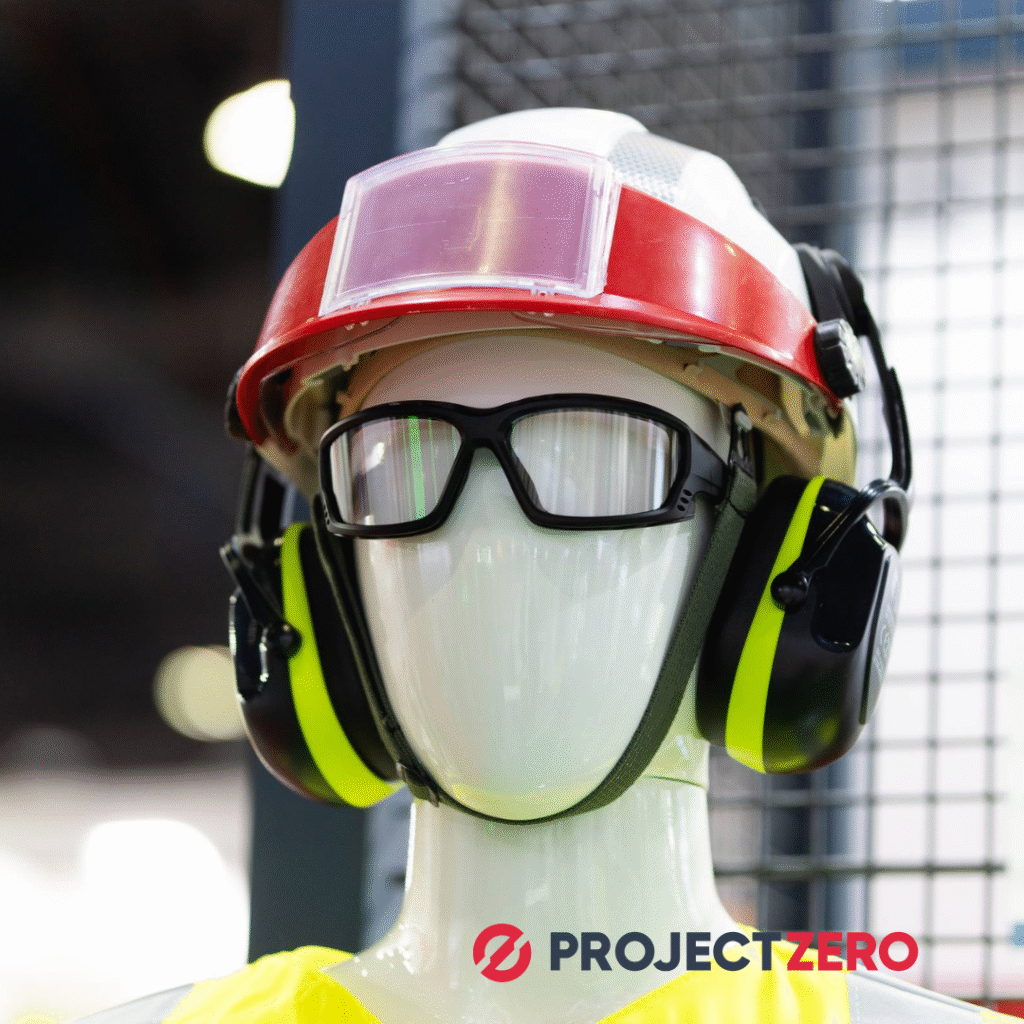
Introduction
In the construction and industrial sectors, safety often depends on the last layer of protection: PPE in construction and plants. Yet many workplace injuries don’t happen because PPE is missing—they happen because it’s the wrong kind, poorly fitted, or used without training. A pair of basic glasses instead of a face shield, gloves too large for precise handling, or a respirator never fit-tested can all turn routine work into an injury.
True protection doesn’t come from equipment alone. It comes from a complete PPE management system—one that integrates selection, fit testing, training, maintenance, and traceability in full alignment with EU Regulation 2016/425.
Why PPE fails
When accidents occur, investigations often show that PPE was present but ineffective. The cause is rarely the absence of gear; more often, it’s poor selection, misuse, or lack of upkeep. PPE chosen generically for multiple tasks, worn-out equipment still in circulation, or items that don’t fit properly are common examples. Compatibility issues—like helmets interfering with respirators or glasses fogging during work—also reduce protection and discourage use.
Protection is not automatic. It only exists when PPE is selected for the actual risk, correctly fitted to the user, maintained regularly, and supported by proper training and supervision.
From risk to reality: building an effective PPE system
The foundation of a strong PPE program is task-based assessment. Each activity must be linked to the residual risks and to the performance requirements for the corresponding PPE. This creates a clear matrix connecting tasks, hazards, and protection levels, helping teams purchase and issue the right equipment every time. Compliance must always be verified through EU Declarations of Conformity, CE markings, and up-to-date certificates. For Category III PPE, such as fall protection and tight-fitting respirators, ongoing surveillance by notified bodies must also be confirmed.
Even compliant equipment, however, fails if it doesn’t fit. Fit testing—especially for respirators—is essential. It’s the only method to verify that a seal is achieved and maintained under real conditions.
Training, supervision, and acceptance
A PPE system succeeds only when people understand and accept it. That’s why training should focus less on slides and more on short, practical sessions. Workers should know how to put on, adjust, clean, and replace their equipment, and when to stop using it. These sessions, repeated periodically or after any change in task or PPE type, help build confidence and prevent routine errors.
Supervisors play a central role in reinforcing compliance. Clear rules of use—adapted to each work zone and task—should be applied daily. Regular field observation and immediate feedback sustain the culture of safety long after formal training ends.
Traceability and maintenance: the hidden backbone of safety
Once PPE is issued, management must continue. A well-designed system tracks who received what, when, and after which training. Simple digital tools, such as QR codes or NFC tags linked to a PPE register, allow teams to monitor expiry dates, replacements, and maintenance actions effortlessly.
Regular cleaning, inspection, and replacement are equally critical. Companies should define objective criteria for withdrawal from use—based on wear, contamination, or time. Respiratory and fall protection equipment, in particular, requires documented periodic checks.
Measure, review, improve
Modern safety management demands measurable results. Tracking indicators such as correct-use rates, fit-test success, replacement intervals, and PPE-related near misses provides concrete insights. During audits, inspectors look not just for paperwork, but for traceability, real performance, and continuous improvement.
How ProjectZero supports your PPE system
At ProjectZero, we help organizations move from compliance on paper to safety in practice. Our team designs task-based PPE matrices aligned with EU Regulation 2016/425, conducts fit tests and compatibility trials, delivers hands-on training, and sets up digital tracking systems with QR or NFC integration. We also define meaningful KPIs and audit methods to assess real-world effectiveness.
A well-structured system for PPE in construction and plants protects workers, improves efficiency, and demonstrates accountability across your operations.
Contact ProjectZero for a rapid, expert assessment of your PPE system—covering selection, fit testing, training, and traceability—to identify and close your safety gaps efficiently.
